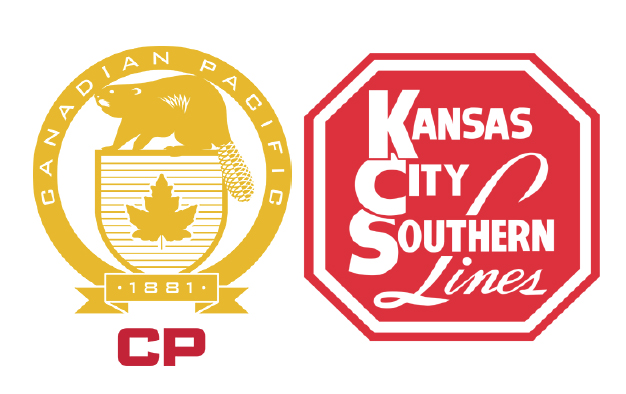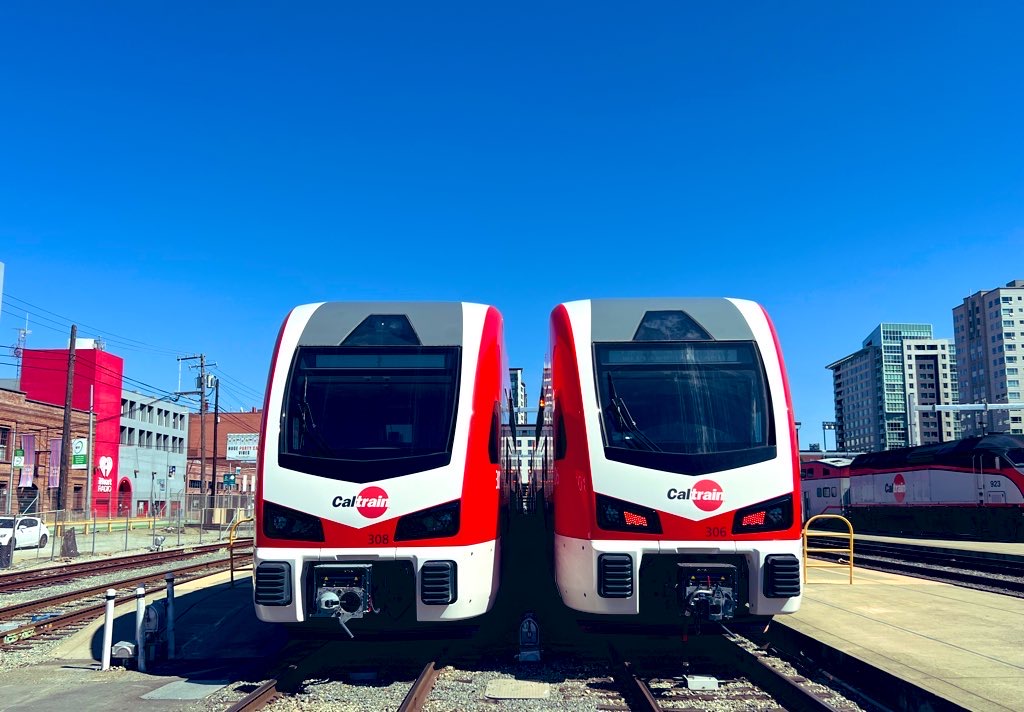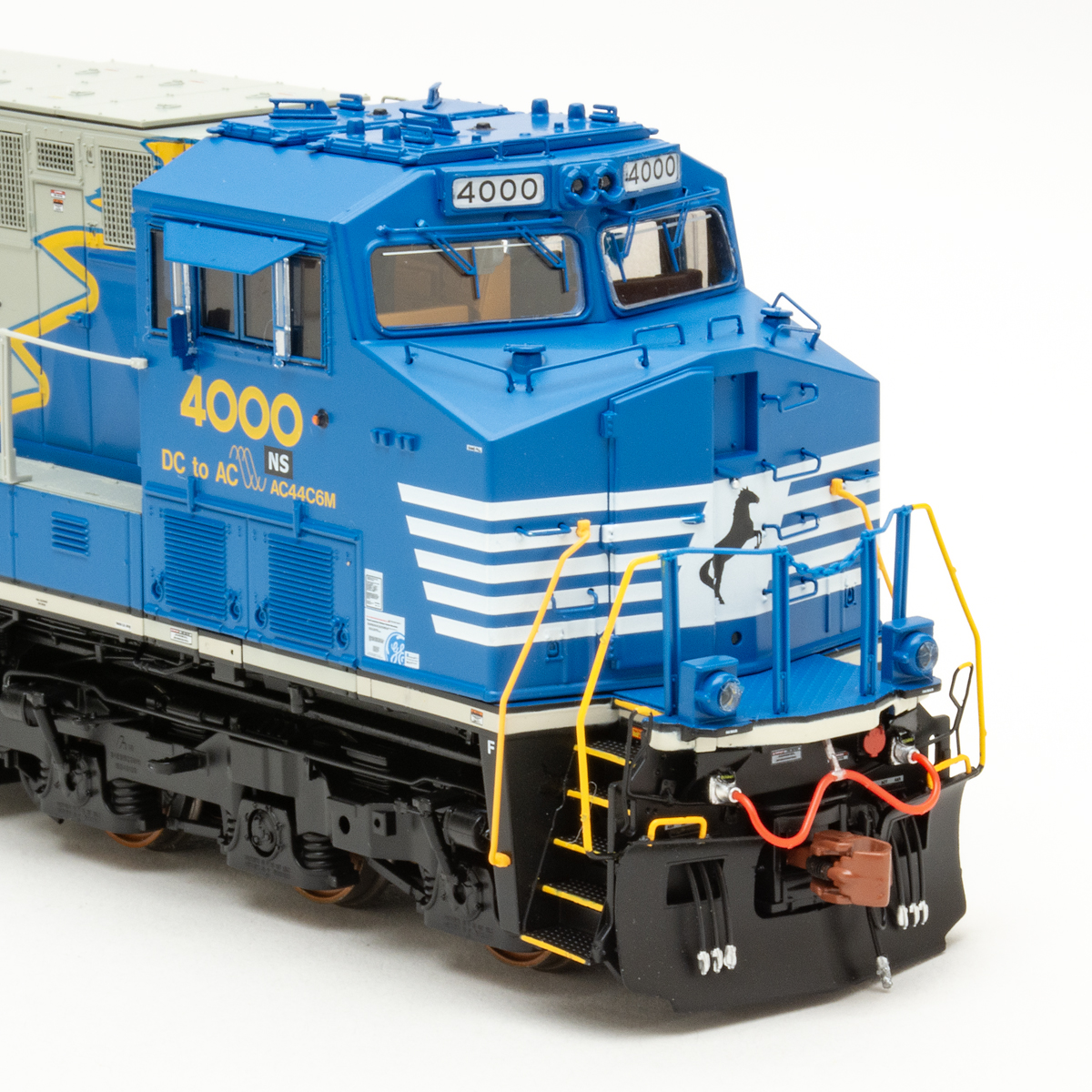 Canadian Pacific and Kansas City Southern want to haul produce grown in Mexico to destinations in the Midwest and Canada.
Canadian Pacific and Kansas City Southern want to haul produce grown in Mexico to destinations in the Midwest and Canada.
The railways ran an interline intermodal train from Laredo to the Midwest this week to test the truck-conversion concept, CP Chief Marketing Officer John Brooks told an investor conference on Tuesday.
The train — CP ES44AC No. 8759 and two CP refrigerated containers stacked on a lone well car — was spotted rolling through Iowa on Wednesday morning, as seen in this brief YouTube video. Brooks did not say precisely where the train was headed, and a railway spokesman declined to provide details. But Brooks said the loads were scheduled to be delivered on Wednesday.
“We are working with a major North American importer of produce. They truck 80-plus trucks a day over the border in Mexico into the U.S. to service the Upper Midwest and Canada,” Brooks says. “They’ve dealt with peaks and valleys in terms of service, driver availability, spot rates popping up and down. They’re at their wit’s end with being so reliant on the trucking industry to fulfill all their transportation needs.”
The U.S. imports more than $12 billion worth of fruits and vegetables from Mexico every year, much of it through the Laredo, Texas, gateway. KCS controls the International Railway Bridge linking Laredo with Nuevo Laredo, Mexico, and the KCS de Mexico.
“This is a tremendous opportunity for us to put equipment into Laredo or directly into Mexico to service this marketplace,” Brooks says.
“We just moved a couple test reefers over the last couple days from Laredo up into the Midwest,” Brooks says, calling it a proof-of-concept interline move. The interline service with KCS today can set up the combined railroads to haul produce, assuming their proposed merger receives regulatory approval.
CP and KCS say their merger will enable them to divert 60,000 truckloads annually to rail by offering single-line service between Mexico and Texas and points in the Midwest and Canada.
Railroads handle a considerable amount of transloaded temperature-controlled intermodal traffic from Laredo to points in the U.S., says intermodal expert Ted Prince, who is the co-founder and chief strategy officer at refrigerated intermodal company Tiger Cool Express. But much of the current intermodal temperature-controlled shipments of Mexican products is frozen, not fresh, due to transit time concerns, he says.
Separately, Brooks says CP’s domestic and international intermodal traffic continues to grow. Its domestic business in Canada has set a new record every month this year. And international intermodal remains strong due to a combination of high demand in Canada, new services offered through the Port of Saint John, New Brunswick, and a major contract win.
CP on July 1 will become CMA CGM’s intermodal partner in Canada, business that currently moves on rival Canadian National.
Brooks says CP’s service to Saint John — made possible by its 2020 purchase of regional Central Maine & Quebec — was a key to landing the CMA CGM contract. The CMQ, which runs from the Montreal area to Brownville Junction, Maine, is part of CP’s historic shortcut to Atlantic Canada.
“They’ve been running a service into Saint John for quite a while. They’ve been running it with our competitor in Canada and it just flat out has made no sense,” Brooks says. “We have the capacity and the most direct route to the market. So really that Saint John opportunity became the catalyst for winning a bigger piece of business with CMA.”
Meanwhile, longtime CP customer Hapag-Lloyd has added a second service to Saint John, where the container port continues to benefit from expansion projects.
“When we bought the CMQ, that was a 150,000 TEU facility at Saint John,” Brooks says, referring to 20-foot equivalent units, the common measure of international containers. “It’s now a 300,000 TEU facility — and it’s sold out.”
The growth will give CP the traffic density to boost its intermodal train length to 10,000 feet from the current 6,000 feet between Saint John, Montreal, and Toronto, Brooks says.
Ottawa and New Brunswick last month announced $42 million in funding for further expansion at the port as well as improvements to New Brunswick Southern’s main line linking Saint John with McAdam, New Brunswick, near the Maine border. The Irving-owned short line is CP’s partner for service to Saint John.
Brooks spoke at the UBS Global Industrials and Transportation Conference.














Reefer empty return? Not always. Southern Railway prematurely lost a ton of westbound North Carolina furniture trade that moved in PFE reefers because someone decided the reefers needed to go home empty. Just as well, I reckon–a few years later and there were darn few PFE and BNFE reefers to be seen in the east.
Yes, people just make stuff up to kill a potential. As in 100% empty return.
Unless the backhauls in the intermodal reefers are direct (non-triangulated) and the freight contained therein does not contaminate the containers, great idea. Many domestic producers of foodstuffs have very strict (and costly) requirements that insure trailers and containers carrying the foodstuffs are “food grade” for such products. Have seen refrigerated trailers from major truckers backhauling scrap metals and contaminated, bundled, scrap paper out of Florida.
I agree on the triangulation concept. CP does have access (though a bit long) to Rotterdam NY where a large amount of perishables change hands. But the third leg of the triangle is missing. CP could bring perishables back from Rotterdam to Bensenville, but the timing stinks due to the non-direct route via the St Lawrence River. Not sure what CPKC would be sending back in those reefers to Mexico.
Pork. They can carry pork to Mexico.
Around 23% of hogs slaughtered in the US, and that’s a lot of hogs, go for export. The largest volume receiver of this export pork is Mexico.
Hog slaughter in the US is centered in, and around, Iowa. CP serves Iowa.
Yes, some rail attempts to move perishables have “Flopped.” So what? You don’t give up. You learn from your mistakes and make a better try the next time.
But, there are always going to be people coming out of the woodwork and forming a line to the right saying: “It won’t work.” I find those folks disgusting.
I never said it won’t work, I was thinking out loud how it would work. I just didn’t know what the return merch would be in those reefers and you answered my question perfectly.
Perishables are tough sometimes due to droughts, changes in certain track or bridge conditions, timing of delivery.
I am familiar with CSX service triangle for perishables and the unfortunate demise of Railex.
According to the USDA, in the year 2021 there were 128,986,000 hogs commercially slaughtered in the US.
The US Midwest is a very good place to raise hogs. It takes 6-7 pounds of grain to produce one pound of pork. And that grain grows quite well in the US Midwest. They feed the hogs near where the hog food is grown.
Because the US has a “Comparative Advantage” for producing pork we can export it. Mexico is the largest volume receiver.
Just for information.
Given the recent history of perishables by rail, why in the world are Amtrak and the host railroads not able to work out a revenue share on such traffic. Ditto movements from the northwest.
Like the others, this 183 job arrived in Bensenville, IL yard on Tuesday afternoon around 3 PM CT. I caught it west of there in Genoa, IL about 2 PM.
I suspect Houston is going to be the make-or-break point for this service. If CPKC and UP can keep trains moving fluidly through here, this service could do well. If they get stuck in traffic for days on end, not so much…depending on how badly CPKC wants this service (and how profitable it is) they may want to invest in additional trackage through here, or even try to build their own line around. Not sure how feasible the latter is today. They may want to do the extra construction anyway for their other traffic.
Agreed.
I think this updated version of Back To The Future will rise or fall on service reliability, which is in question these days.
And as we have seen in recent years, produce by rail can flop and has flopped.
As Mr Strawbridge noted, perishables failed because if the rail operator couldn’t assemble a full consist from the shipper, they routed the reefers through their cheapest means (Chicago), which isn’t always the fastest way.
I applaud CP for the POC and the effort it shows to make new things work, a single car with 2 reefers and an engine do not represent a truck replacement (yet). When they start pulling 20-30 cars full of reefers (essentially 60 trucks worth) from Laredo to even just Bensenville in the contracted time period, then I can start cheering.
There is a huge market development potential for rail freight in the long haul movement of temperature controlled freight. It’s great to see the CP/KCS working to get that freight on their railroads.
The railroads were largely driven out of this business by the idiot government economic regulators. For example, truck charges for movement of fresh fruit and vegetables were never regulated. Rail charges for FF&V were strictly regulated. The truckers obviously took the business because they could price with the market while railroads could not.
Now, the railroads have to claw their way back in. It’s great to see them trying. Go get ’em guys.
RRs were deregulated in 1980. Plenty of time to “claw their way back in”. Truckers took the business because they provided better service.
Trucks do well at this market for several reasons, the most important being reducing empty returns. Trucks realize that no money is made hauling an empty, RR perishable traffic, especially in reefers, is 100% empty return.
To date, every rail perishable move in recent history has either ended in failure, for the above cited reasons of service and economics, or are a niche market, like potatoes from Idaho.
Potatoes from Idaho are a mighty big niche.
Rail perishables do not have a 100% empty return. When reefer truckers such as KLLM and Prime buy reefer containers for rail movement, and they have done that, you know there is something there.
There have been some false starts, such as trying to put perishables in less than daily unit trains, but we make progress by trial and error. So there are going to be some errors.
The railroads are weak in the market development area. But they’re getting there.
“They’ve been running a service into Saint John for quite a while. They’ve been running it with our competitor in Canada and it just flat out has made no sense,” Brooks says. “We have the capacity and the most direct route to the market. So really that Saint John opportunity became the catalyst for winning a bigger piece of business with CMA.”
It made plenty sense to use CN.. They don’t cross the border twice.. Which means the CN routing is more efficient..
Other than that.. Great news to see if there’s potential to grow Laredo-Midwest/Canada produce lanes..